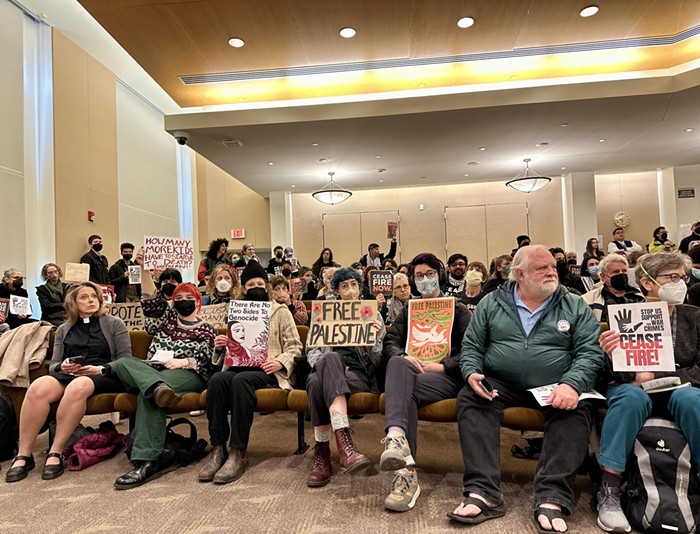
Nearly 3,400 healthcare workers at Kaiser Permanente in Oregon are on the verge of striking as their union contract expires and contract negotiations between Kaiser and workers across the country have stalled.
Members of the Oregon Federation of Nurses and Health Professionals (OFNHP), which represents Kaiser nurses and a number of other Kaiser healthcare professionals in Oregon, are some of the more than 50,000 Kaiser workers in the US who could vote to strike as soon as next week.
At the center of tensions between the workers and Kaiser is a staffing crisis heavily exacerbated by the COVID-19 pandemic that workers say is threatening quality of care and that Kaiser is doing little to address.
“It is almost only about staffing,” said Joshua Holt, a nurse who serves as chair of OFNHP’s registered nurses bargaining unit. “We have issues of appreciation—our staff does not feel that they’ve been recognized by the employer for what is going on—but it is first and almost only about we need the staff to care for our patients. If we go on strike, that is what it’s about.”
Kaiser has been experiencing staffing shortages in Oregon for months. In July, The Oregonian reported that Kaiser was paying emergency department nurses willing to work nights an $8,000 signing bonus. In August, a Kaiser spokesperson told KATU that it was “recruiting nurse[s] to help increase hospital capacity. This includes hiring bonuses and other incentives.”
While Kaiser and the healthcare industry at large is not the only industry facing severe staffing shortages, Holt said that staffing concerns at Kaiser predate the pandemic and speak to broader issues that the organization must address in its contract offer.
Wages are a primary concern.The union is seeking a four percent wage increase across the board. Under Kaiser’s last offer, workers in Oregon would stand to receive just a one percent wage increase—which, Holt estimates, would only raise the pay rate for many existing nurses by 50 cents.
While most Kaiser healthcare professionals in Oregon are represented by OFNHP, other Kaiser workers are represented by a range of different unions, including Service Employees International Union (SEIU) Local 49. In 2019, those SEIU Local 49 workers agreed to a new contract that guaranteed them a 12 percent wage increase over the lifetime of the contract.
In addition to the meager wage increase, Kaiser is proposing to offer OFNHP lower compensation to new hires—effectively creating a two tier pay system.
“We see [the proposal] not only as a guaranteed way to exacerbate the staffing problem—because people are not going to want to come work here if they are going to be underpaid, according to the market—but it’s a signal from our employer that they want to bust our union,” Holt said.
Arlene Peasnall, Kaiser’s senior vice president of human resources, said in a statement that employees represented by OFNHP earn 27 percent above the average market wage and that Kaiser wants to institute a “market-based” compensation structure for new employees to “help address future costs and ensure we continue to be affordable for our members.”
The level of acrimony between workers and Kaiser during this negotiation is notable. Kaiser has participated in a labor-management partnership for more than 20 years, which the SEIU in 2019 called the “most successful and largest such partnership in the country.”
Now, that partnership is in jeopardy—and money is not the workers’ only concern.
Holt said that Kaiser has in recent years instituted “lean staffing” models to increase worker “productivity” and has in some cases failed to list open positions in a timely manner, while multiple other workers said that issues like workplace safety and a lack of commitment to proposed social and racial justice initiatives also stand out as major sticking points.
According to the union, Kaiser has reneged on an initial agreement to make Juneteenth a paid holiday and offer cultural competency training. Kaiser has settled multiple racial discrimination lawsuits this year.
Nicole Brun-Cottan, an acute care physical therapist and union shop steward said that Kaiser’s approach has been marked by disrespect “every step of the way.”
“I am staggered at the disconnect,” she said.
Like many major healthcare companies, Kaiser continued to rake in billions of dollars in profit during the pandemic. The consortium generated $2.2 billion in profit in 2020, down only slightly from the $2.7 billion it collected in 2019. It is on track to increase revenue this year as membership in Kaiser’s health plan continues to rise.
Kaiser felt secure enough in its financial position last year to decline all but $11.8 million of the $500 million it was offered in federal relief funding through the CARES Act.
But company officials are also contending with another in a series of crises facing the American healthcare system: staff burnout. A union survey conducted in early September found that nearly half of the nurses they represent are considering leaving the field entirely, and 60 percent are considering leaving Kaiser.
Sarina Roher, a care coordinator at Kaiser’s Sunnyside Medical Center in Clackamas, said that burnout does not encapsulate the emotional turmoil many healthcare workers are experiencing in the system after nearly two years of working in emergency conditions—even as healthcare conglomerates continue to make exorbitant amounts of money.
“I will run my body into the ground until the wheels fall off,” Roher said. “I will do everything I can physically to meet the demands of patients. But when I go home at night and I just cry because I feel like I could have done so much better if I was not stretched so thin, that is not burnout.”
Now, OFNHP members say they have to take a stand.
“We hope to communicate to providers at other healthcare networks—we are trying to hold the line for us and for them also,” Brun-Cottan said. “Because if Kaiser succeeds in pulling what they're trying to pull right now, 20 months into a pandemic, after everything that we’ve been through… what will they do when it's really a rainy day?
The union plans to hold a strike vote starting on Monday. A union spokesperson said that in a survey conducted a week-and-a-half ago via email, text, and phone call, more than 90 percent of respondents said that they would vote to strike if Kaiser’s contract offer does not improve.
Healthcare workers feel confident that they’ll receive a similar outpouring of community support that striking Nabisco workers in Portland received in August and September. On Wednesday night, roughly 750 people, including Secretary of State Shemia Fagan, joined OFNHP for a rally outside of the Kaiser building in Northeast Portland.
OFNHP members said they do not yet know the timeline for completing the strike vote. If they do vote to strike, OFNHP has to give Kaiser a ten day notice so that Kaiser can make plans to bring in temporary workers or move patients to other facilities.
There is evidence to suggest that Kaiser is preparing for such a scenario, posting job listings on websites like Indeed.com and reaching out to healthcare workers in an effort to recruit temporary workers in the event of a work stoppage. The workers are preparing as well.
“If we take this current offer from Kaiser, the people [who] are going to suffer are our community,” said Hannah Winchester, a home health physical therapist and member of the professional unit bargaining team. “It’s not just us.”



















